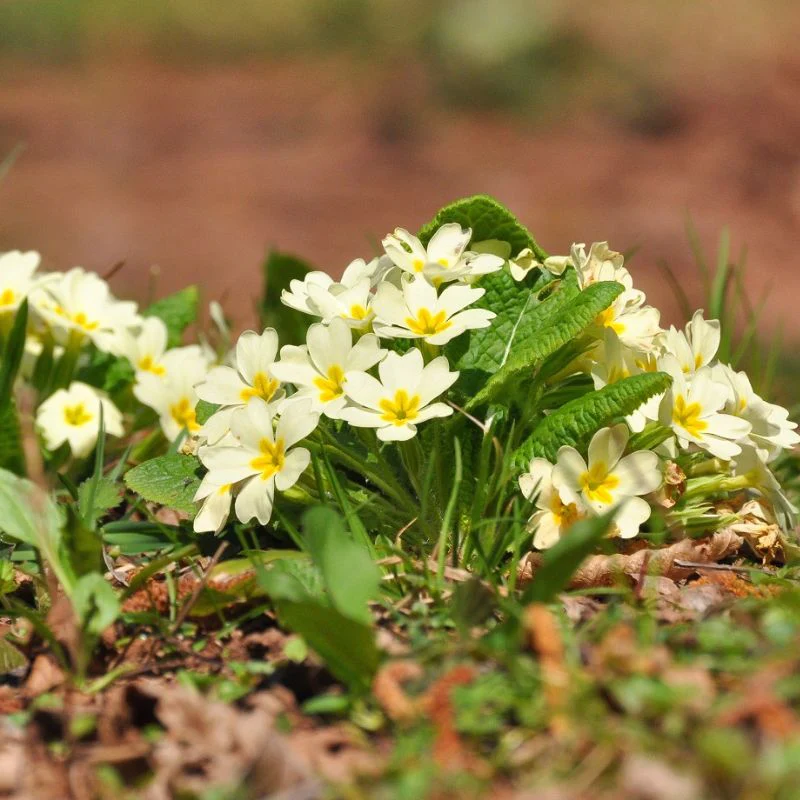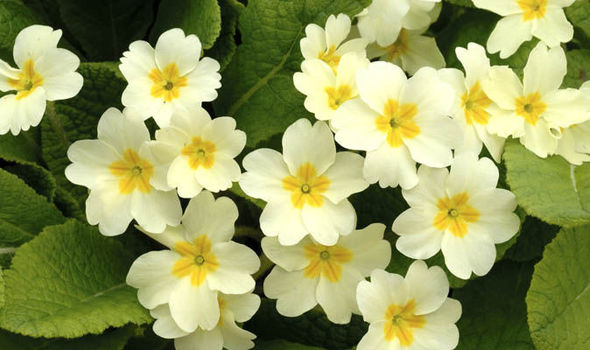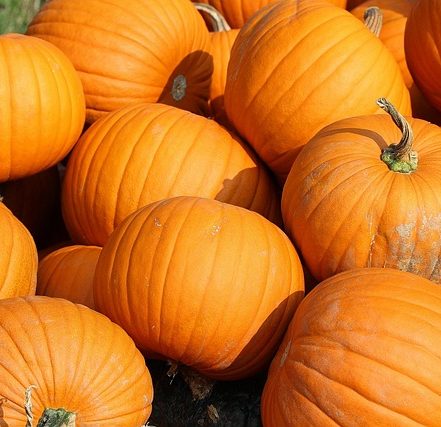The British primrose, also known as the common primrose or English primrose (Primula vulgaris), is a cheerful sign of spring. It is one of the first woodland blooms and an important nectar source for butterflies. This stunning British native, with its pale yellow blooms and fresh green, crinkled leaves, is one of our most popular spring flowers. Primroses will grow into clumps over time, which can then be divided and replanted throughout the garden to create a larger display. Primroses will also self-seed in the right conditions, adding a natural look to your garden borders. Cultivated forms, known as ‘polyanthus’, are also available and flower in a variety of colours such as bright purple, red, and pink.
Primroses thrive in moist soil in partial shade, alongside forget-me-nots, snowdrops, and other spring flowers.
Fun fact: Both flowers and leaves are edible, the flavour ranging between mild lettuce and more bitter salad greens. The leaves can be cooked in soup but preferably with other plants because they are sometimes a little strong. The leaves can also be used for tea, and the young flowers can be made into primrose wine.
Its pale lemon flowers, with a delicate scent, which were traditionally crystallised and eaten at Easter time.




